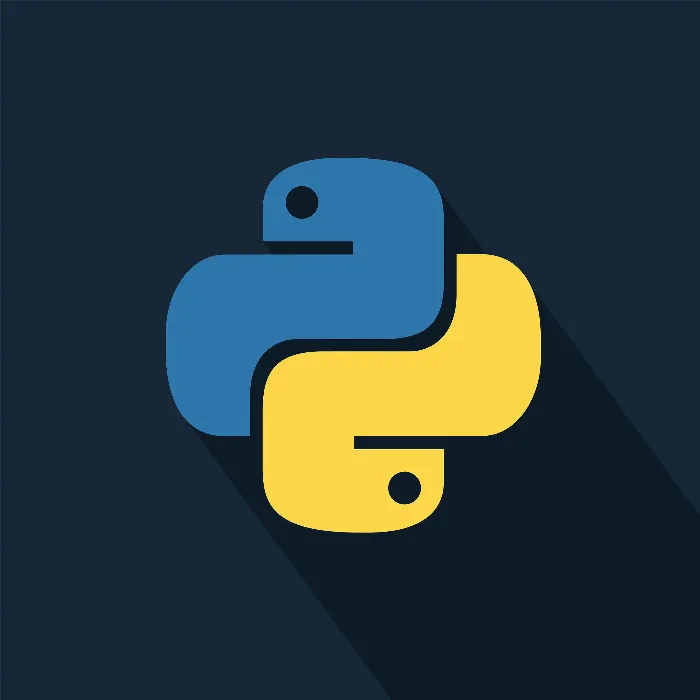Python is an extremely flexible programming language that allows you to efficiently manage a variety of data structures. One of these structures is dictionaries, which do not store a specific order for their keys and values. This can be a hindrance in certain applications. Therefore, the OrderedDict, an ordered dictionary, is of great importance. In this guide, you will learn what OrderedDict is, how to use it in your projects, and the advantages it brings.
Key Insights
- A normal dictionary stores data unordered, while OrderedDict maintains the order.
- Importing the collections library is necessary to use an OrderedDict.
- OrderedDict is particularly suitable in cases where the order of elements is relevant, such as in queues.
Introduction to OrderedDict
Let’s start with the basics: A dictionary in Python stores key-value pairs, but without a specific order. This can lead to confusion, especially if you want to output the data in a specific order. This is where OrderedDict comes into play, which stores the elements in the order they were inserted.
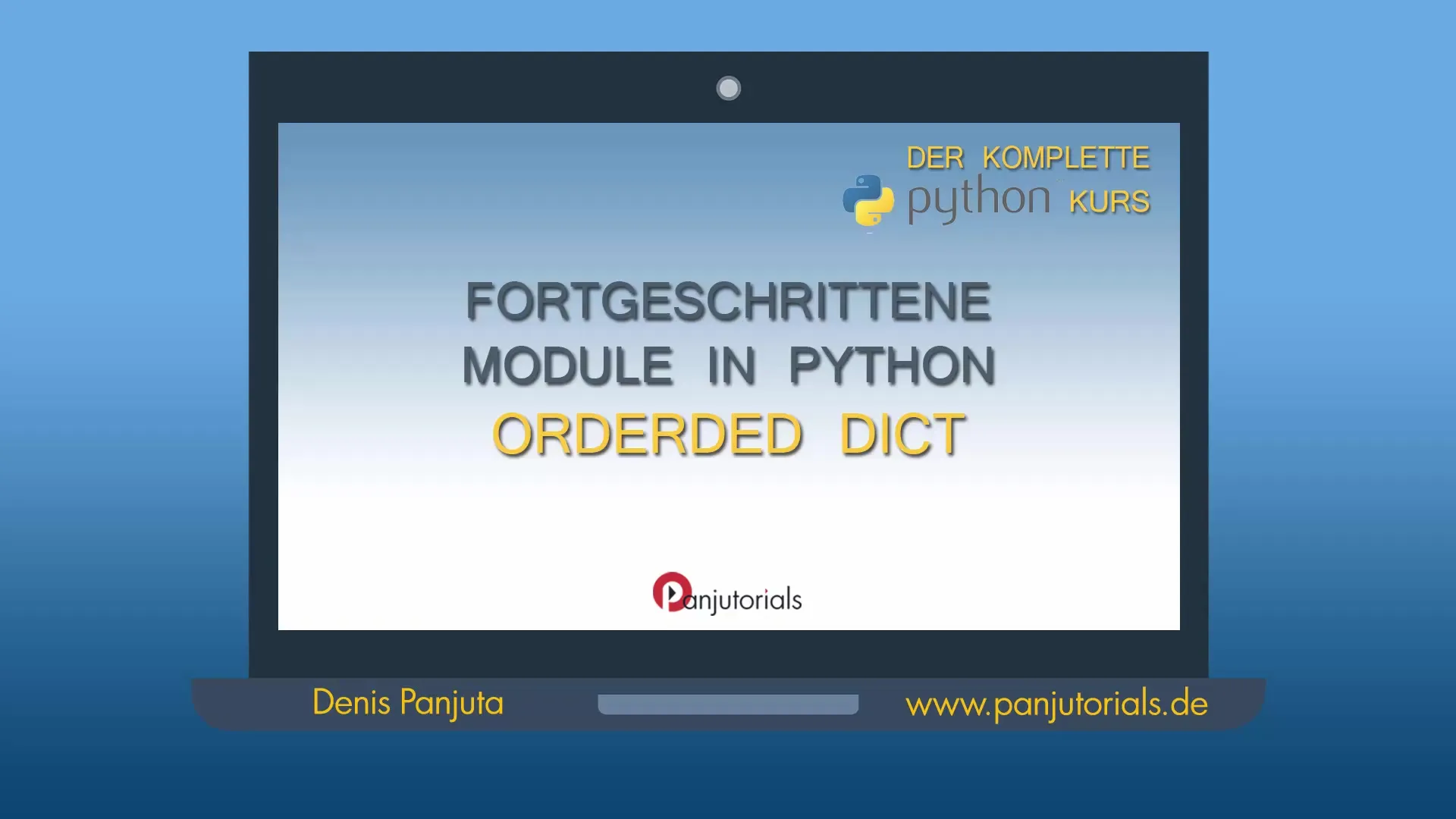
To create an OrderedDict, you need to import the collections library. The following example shows how to do this and create an OrderedDict.
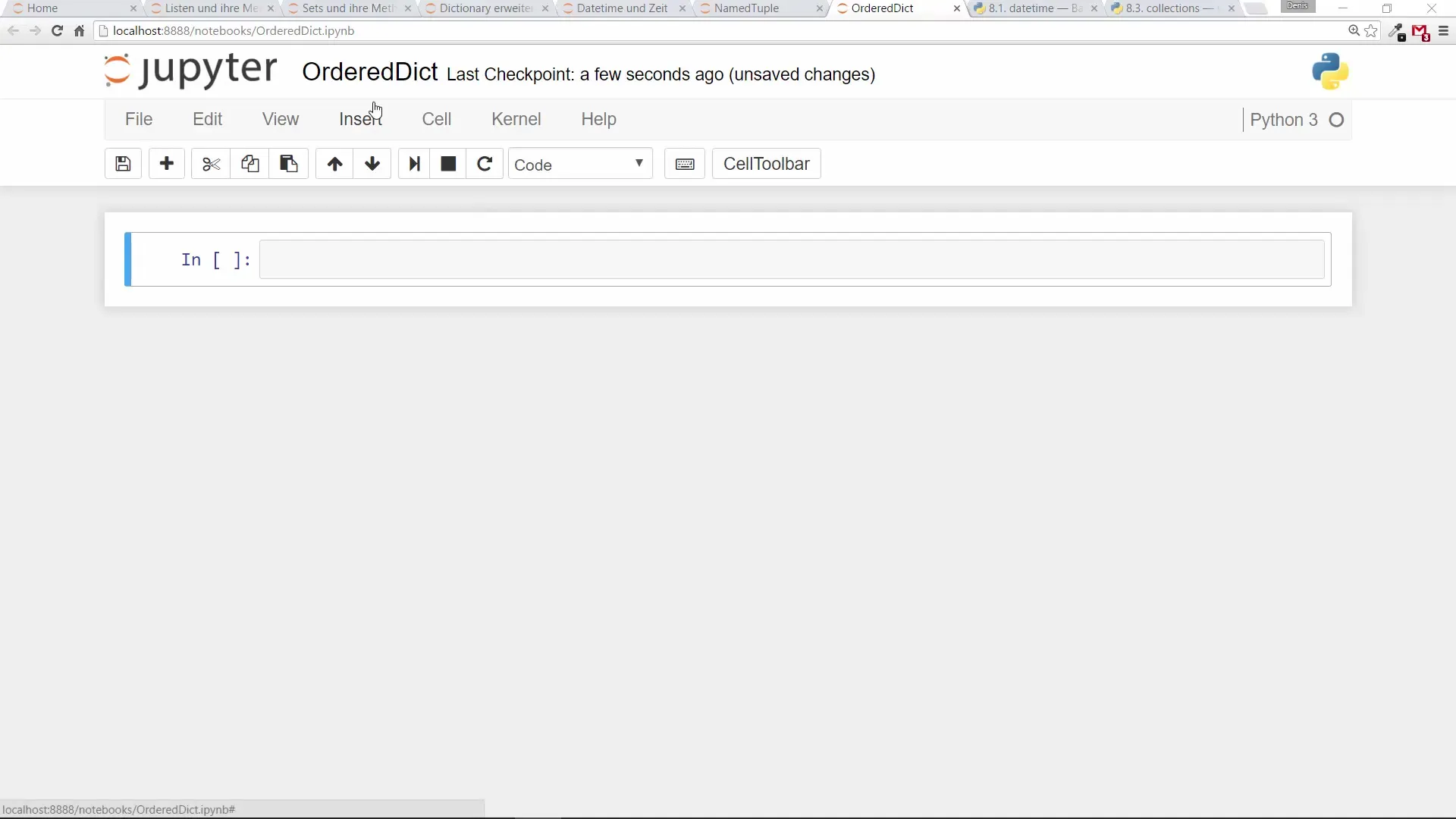
Step 1: Import the collections library
The first step in using OrderedDict is importing the collections library.
Step 2: Create an OrderedDict
Once you have imported the library, you can create an OrderedDict.
Now you can add key-value pairs in the desired order.
Step 3: Iterate over the OrderedDict
To ensure that the elements are output in the order you specified, you can iterate over the OrderedDict and output the elements.
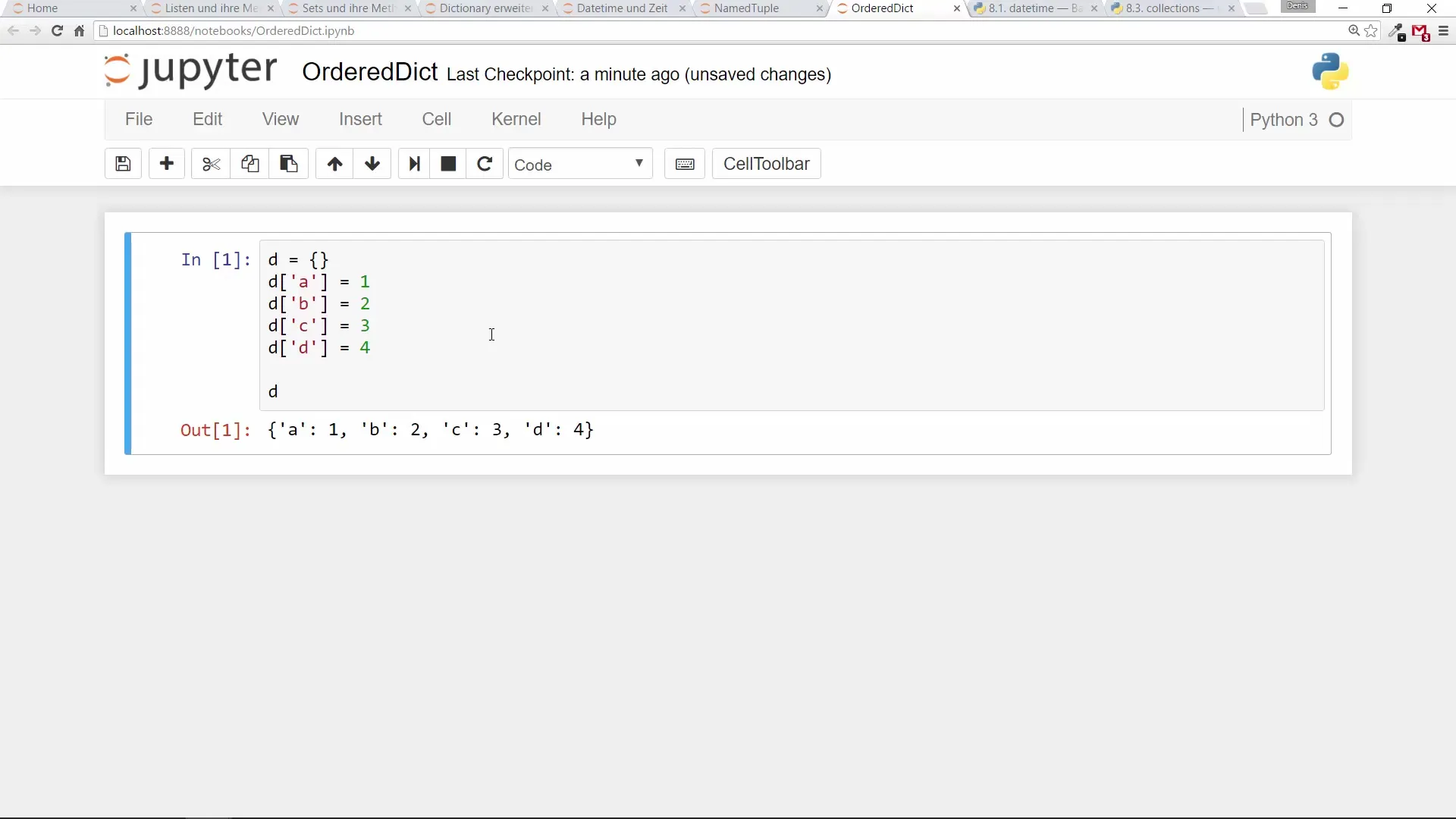
When you run the code, you will see that the order of the output exactly matches the order in which the elements were inserted: A1, B2, C3, D4.
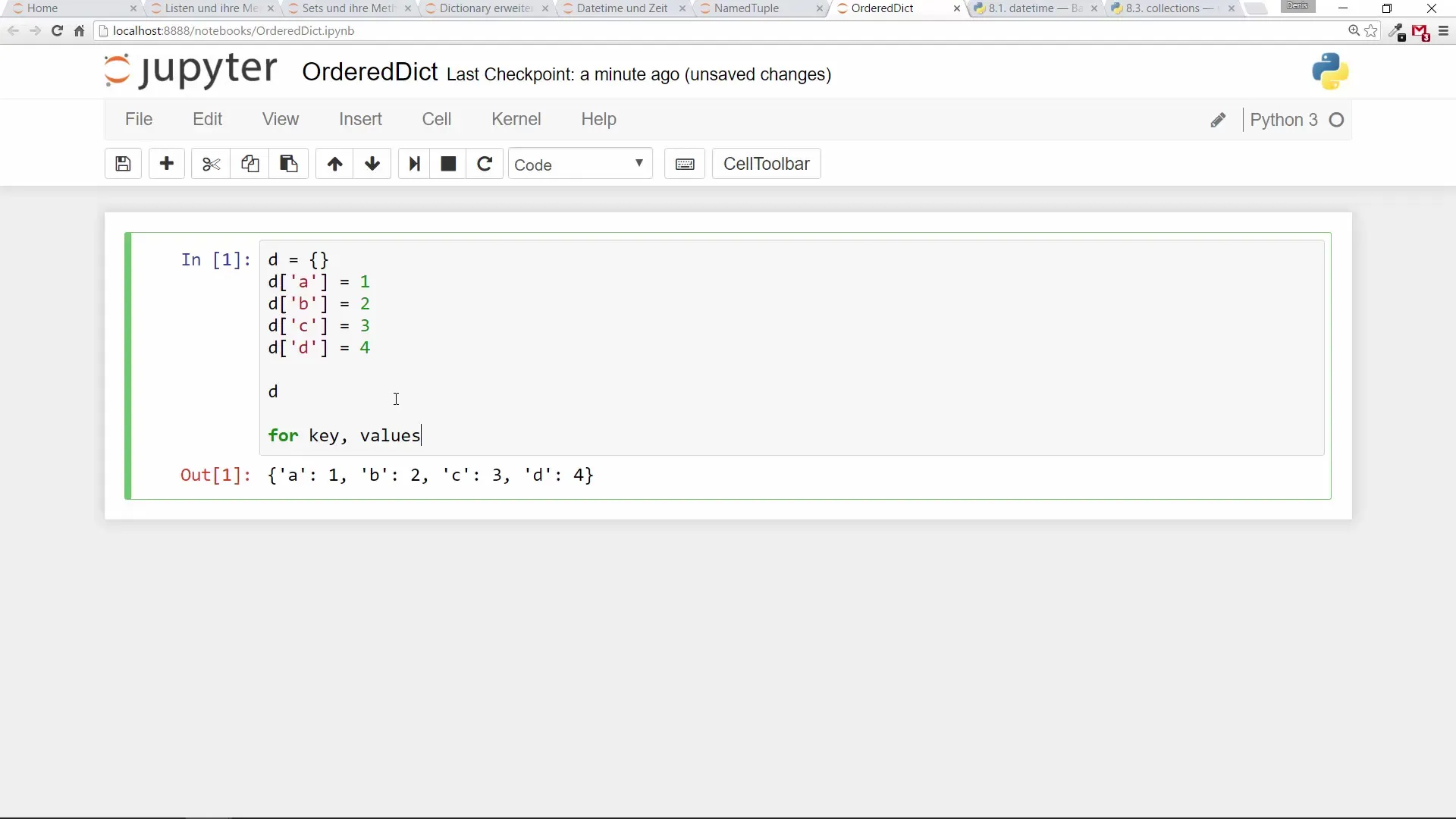
Step 4: Advantages of OrderedDict
An OrderedDict is particularly useful when the order of the elements matters. In many cases, such as processing queues or creating menus, it is necessary to maintain the elements in a specific order. In contrast, the order does not matter in normal dictionaries. However, you should consider that in many applications a simple dictionary is sufficient. The real advantage of OrderedDict comes into play when the order is indeed important.
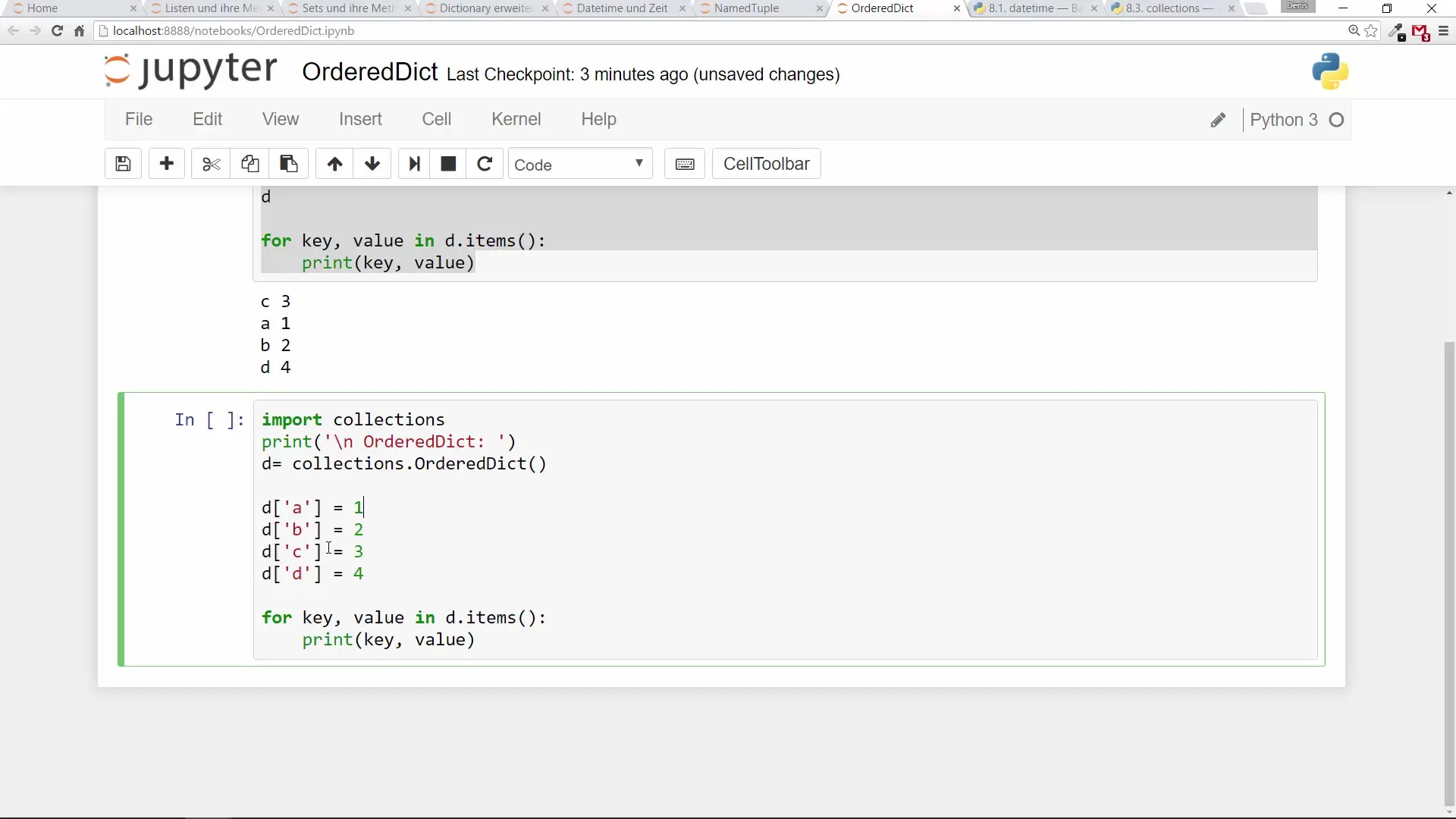
Summary – Python Programming for Beginners – OrderedDict in Detail
Using OrderedDict in Python gives you the ability to store data in a predictable order, thus providing you with more control over the processing of your information. With the steps learned in this guide, you are now able to effectively utilize OrderedDict in your projects. Remember that although there are specific use cases for OrderedDict, in many simple cases, you can also work effectively with a normal dictionary.
Frequently Asked Questions
What is the main difference between a dictionary and an OrderedDict?The main difference is that OrderedDict maintains the order of the elements, while dictionaries do not guarantee the order.
How do I create an OrderedDict?Import the collections library and use OrderedDict() to create an instance.
When should I use OrderedDict?Use OrderedDict when the order of the elements is important for the logic of your program, such as in queues.
